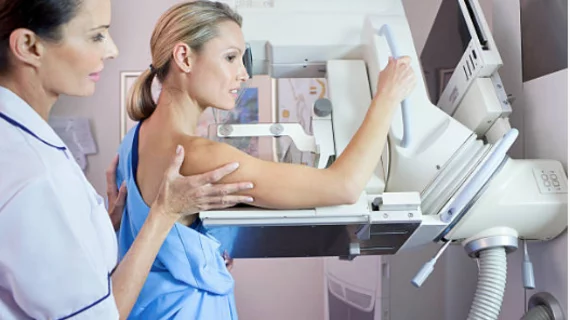How did big policy changes impact cost sharing for screening mammography?
Nearly all commercially insured women between the ages of 40 and 74 had access to screening mammography without cost sharing after the Affordable Care Act (ACA) was signed into law, according to new research published by the Journal of the American College of Radiology. However, the authors noted, mammography utilization has dropped in recent years due to another significant policy shift.
When the ACA was signed in 2010, it required healthcare plans to eliminate cost sharing for preventive services such as mammography when the service received an “A” or “B” rating from the U.S. Preventive Services Health Task Force (USPSTF). The USPSTF, meanwhile, changed annual screening for women between the ages of 40 and 49 from a “B” rating to a “C” in 2009, leaving the costs associated with such screening in question.
“The primary objective of this study was to correlate changes in cost sharing for screening before and after implementation of the ACA and the revised USPSTF guidelines with screening utilization,” wrote Ruth C. Carlos, MD, MS, department of radiology at the University of Michigan in Ann Arbor, and colleagues.
Carlos et al. explored data from more than 1.7 million commercially insured women between the ages of 40 and 74 without a history of breast cancer or mastectomy. While 81.9 percent had no cost sharing for mammography in 2004, that number hit 93.1 percent after implementation of the ACA and reached 98.2 percent in 2014. Women aged 40-49 were not targeted with increased cost sharing after the USPSTF policy shift.
“Before the ACA, employer-provided health insurance plans granted first-dollar coverage for screening mammography to a substantial majority of their beneficiaries,” the authors wrote. “ACA implementation resulted in near-universal elimination of cost sharing. Despite USPSTF guideline revision in 2009, these health plans continued to provide the same level of screening coverage for women aged 40 to 49 as for those aged 50 to 74 years.”
The researchers also observed that screening utilization has declined in recent years, going from 42.2 percent in 2009 to 40 percent in 2014.
This, the authors wrote, suggests that “the expected increases in use due to lower out-of-pockets costs were offset by reductions resulting from the USPSTF guideline revision.”

